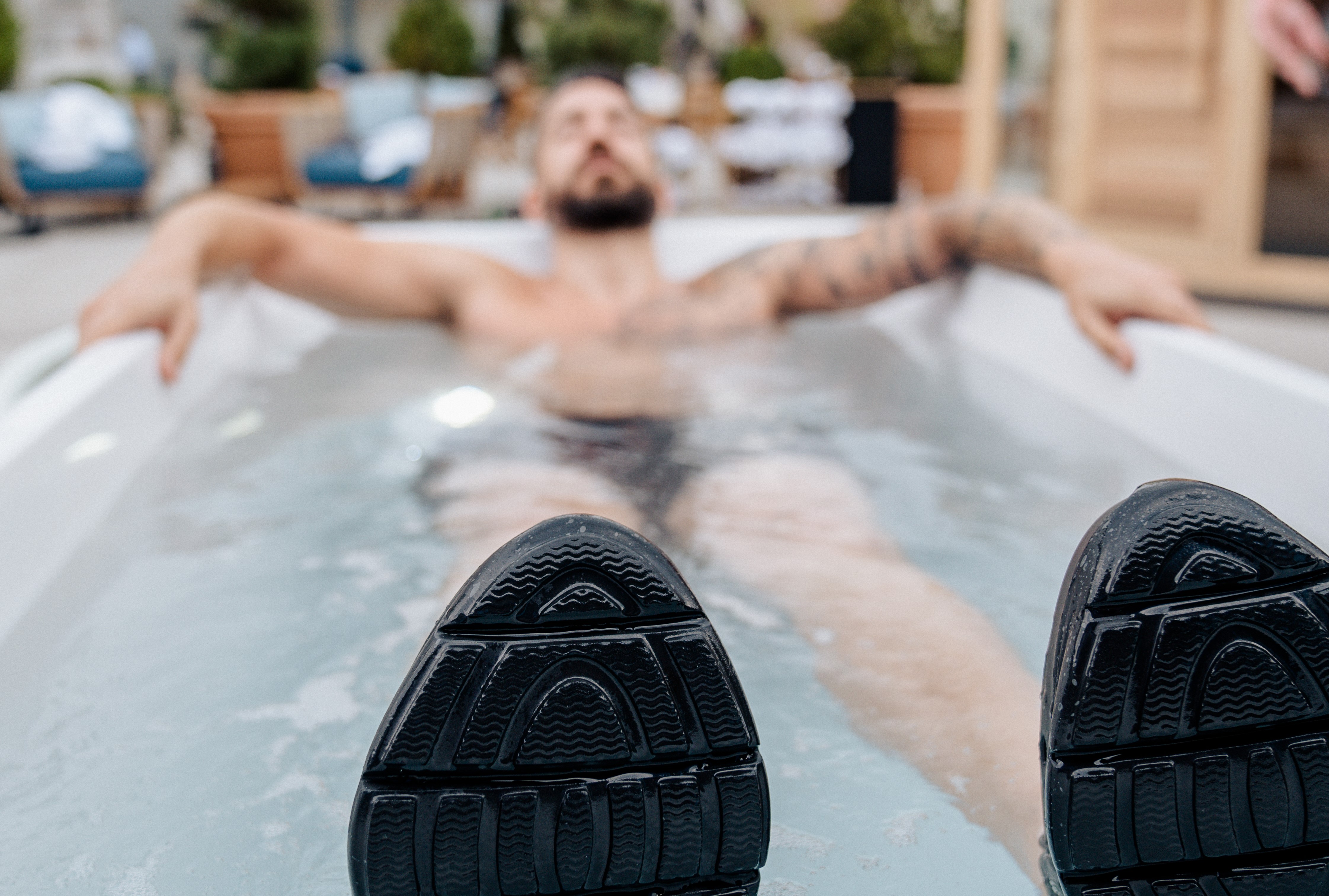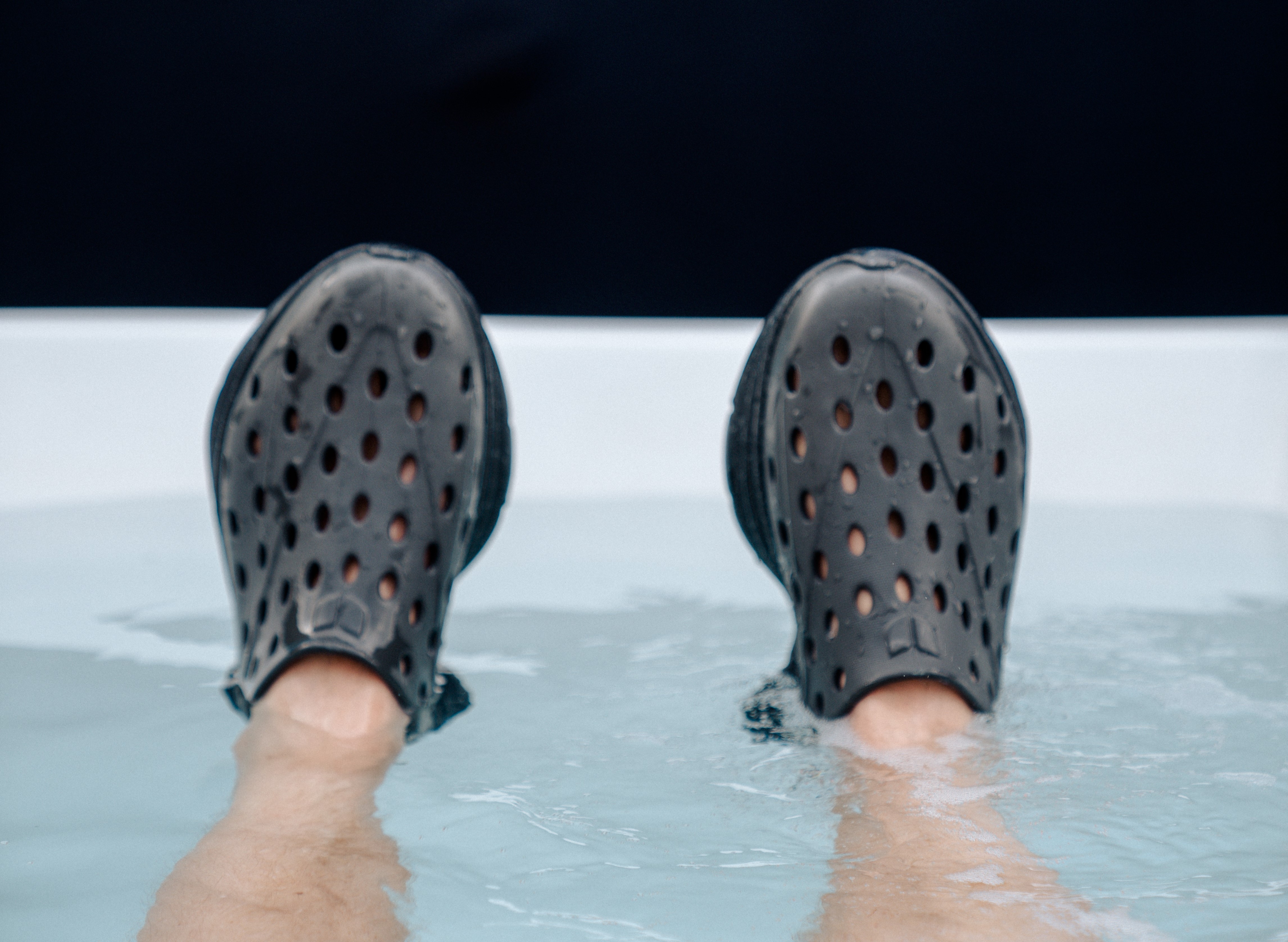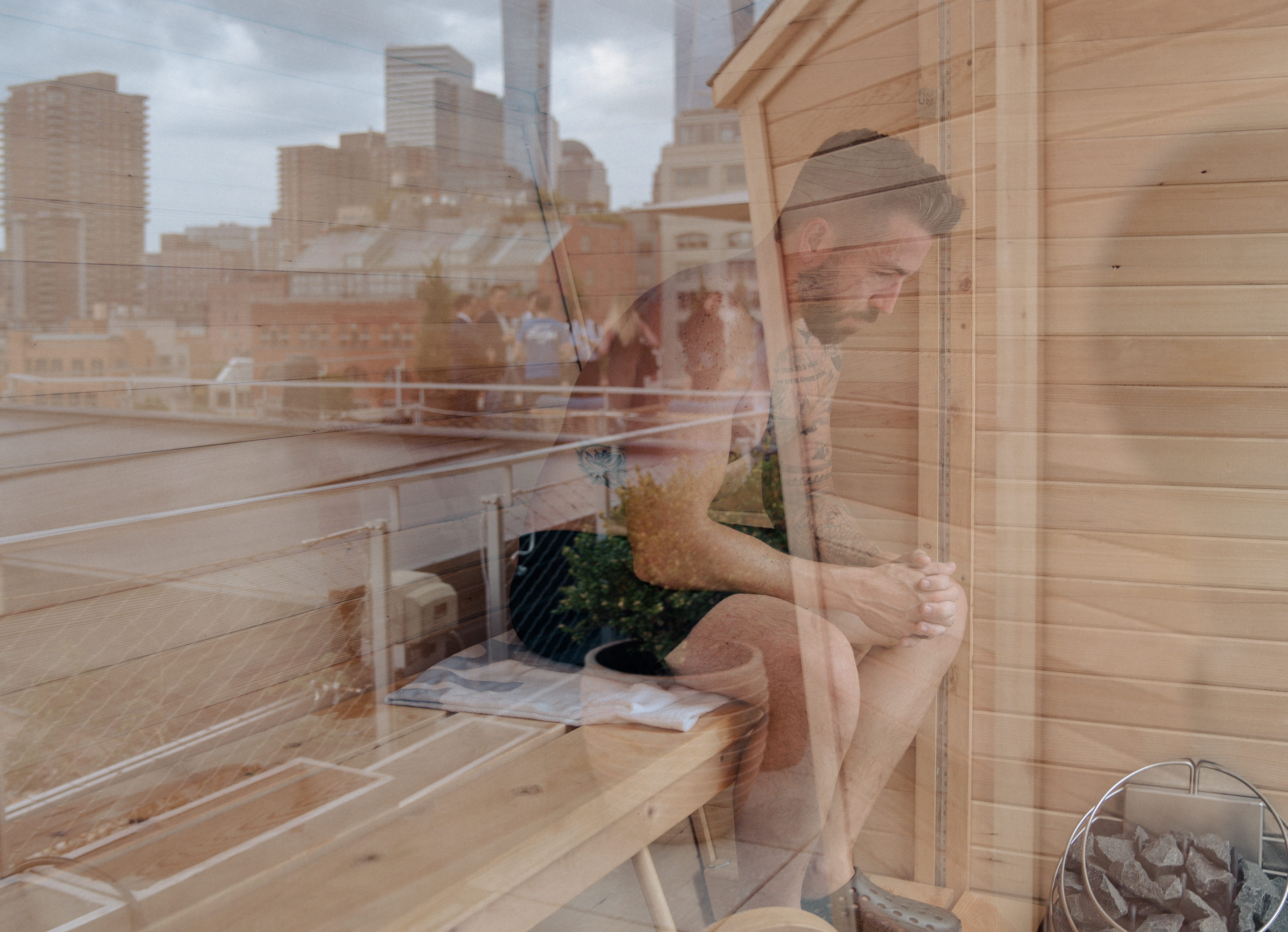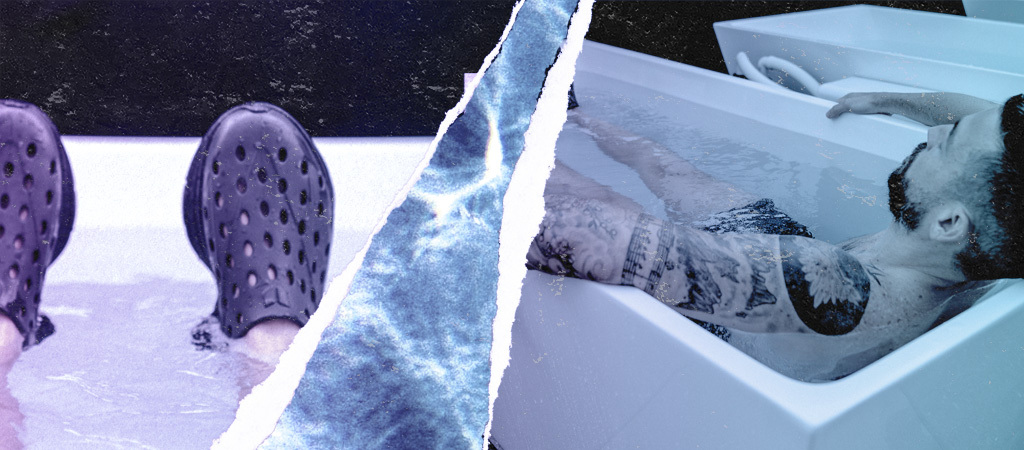Cold water immersion, specifically “cold plunging,” dove into the spotlight recently thanks to its proliferation all over social media. The viral nature of the activity and mainstream fascination with jumping into tubs filled with icy water is easy to understand. Not only does it make a splash visually, but it provides an element of adventure without leaving your own backyard. That partnered with the historical use by elite athletes to combat inflammation and recover quickly makes the practice pretty engaging.
That being said, is cold plunging right for everyone? Do you need to do it every day? Everyone has seen what can happen when trends go wrong, and since you’re exposing yourself to a uniquely challenging environment, it’s important to exercise care. Don’t hop into a freezing bath filled with ice without a plan. Especially not just because you saw someone do it on Instagram.
For first-timers, a little conscious experimentation and research can go a long way to starting a practice that will stick. There are plenty of great places to start with your education, places like Dr. Andrew Huberman’s podcast or the books of Wim “The Iceman” Hof. And while there aren’t a ton of definitive studies when it comes to the physiological benefits, there is no debating that the practice has been used for centuries by many different cultures. The ancient Greek physician Hippocrates, father of modern medicine, declared the medicinal nature of the cold, stating in his book On Airs, Waters and Places that “the water can cure everything.”
There is one certainty when it comes to cold plunging. This is a personal journey, and everyone experiences the benefits differently. That’s why here at Uproxx we thought it could be helpful for those thinking about starting their journey to hear two writers discuss their own origin stories with the practice. Below, Uproxx fitness lead Charles Thorp and writer/ photographer Julianne Sato discuss how it felt to break the ice, building it into a routine, and why it may be time for you to finally take the plunge.
CT: Do you remember the first time that you went for a plunge and what drew you to trying it?
JS: I grew up playing competitive sports and we had an ice bath in our high school gym that we used to use for muscle recovery. It was always pretty miserable and the association of sitting in tubs of ice water was never very alluring until I started doing cold plunges at places like K-spas, Knot Springs, and The Society Hotel. The combo of saunas or hot tubs with a cold plunge was an effect I loved. It was energizing and invigorating.
Having something warm after a cold plunge absolutely heightens the experience for me, but lately, I’ve been so interested in the effects of cold plunging in general that I started doing them at home without a hot tub or sauna to warm me back up. The real point of interest for me was in the associations with improved sleep. I often struggle to get a good night’s sleep. Bedtime always feels ripe with anxieties and I almost always have a 4:00-6:00 am stretch of lying awake, counting down the minutes until my alarm goes off. But I had a friend swear a daily cold plunge, especially close to bed, changed his sleep patterns — so I figured I’d give it a more regular go.

CT: For my part, I feel like I’ve been plunging since I was a kid. Growing up in Maine with a group of adventurous friends, polar bear jumps into freezing rivers and lakes was a regular way to get energized all winter. Of course, at the time I had no idea the natural buzz I was feeling was caused by the resulting hormones and neurotransmitters like beta-endorphins and dopamine. I just knew that I felt “full of life” after.
It wasn’t until much later, when I did a month-long training program at an elite football facility that I learned of the recovery benefits that jumping in cold water had. There, athletes were preparing for the NFL and doing two massive workouts a day. Because of the amount of punishment our bodies were taking, the cold plunge after every day was mandatory. Since we were working out in Arizona, the cool water was a massive relief. That is where I started to see the real benefits, but it wasn’t why I started a daily practice.
What was your motivation to explore plunging more?
JS: I think the motivation to keep doing it came from the effects I experienced. I wasn’t religious enough with the practice to claim to do it every single day, which actually made me more convinced than ever of its effectiveness. It was clear I was sleeping better on the nights I took a plunge before bed than I was on the days I chickened out. It’s all anecdotal, but I do think the correlation is strong.
I also found that the timing of the plunge impacts the outcomes. For a good night’s sleep, I think doing it within a couple of hours of going to bed is the most effective. It seems a bit counter-intuitive because the icy water also has a very noticeable energizing effect, but if I have time after to take a hot shower and relax before going to sleep, it makes me sleep deeper and more restfully. On the days I’m motivated enough to do it in the morning, I don’t take a hot shower after, but just get dressed in warm clothes and let my body warm up on its own. I think this keeps the energy from the plunge flowing.
It’s similar to the effect of washing your face with cold water to help wake you up… times 1000.

CT: I was really drawn to that idea of forcing myself to get comfortable in the uncomfortable. As someone who has been drawn to adventure my whole life, like I know you have Steve, it’s hard when you are stuck home between trips. Once you’ve spent days outside challenging yourself, it can be tough to come home and just sit still in a house set to that perfect 70 degrees.
I found myself getting really melancholy on my days back home, and constantly looking forward to when I could get back on the road or in the wild. Working out helped, but even when I pushed myself I was still comfortable when it came to my environment. That’s when I first started checking out some of the writing by Wim Hof. The idea of combining plunging with meditation and breath work made a lot of sense. I found a lot of videos that helped me in that pursuit, but I will say, having an in-person coaching session early on was a massive advantage. I’ve worked with a few coaches, most recently at IMR Float in Nevada.
JS: I could totally see this, but I don’t think I have the same experience. Cold plunging sits pretty firmly in the wellness category for me. It’s a bit of an “eat your vegetables” mindset for me. I know it’ll make me feel good after and I know it’s good for me, but the experience of it is… a little miserable! So I am still in the camp of having to force myself to do it. I’m not sure I’ll ever get to the place of enjoying the experience of the soak, but it undeniably makes me feel better after. I’m fully convinced of that. But I have yet to enjoy the discomfort beyond how I know I’ll feel when it’s over.
I wish I could view a cold plunge as an adventure like you!

CT: There are a lot of great resources online, but having someone by your side who understands our breath and how to be more effective with it helped me massively. I like to think I know a lot, and I did all of the research, but it’s hard to process all of the information objectively when you first hop in the water.
I’m glad I had someone there to coach me during my first real session. I was no stranger to cold water, but learning the best way to breathe while entering and how to pace myself through the experience helped me go longer than I expected for my first run. What was your first experience like?
JS: I haven’t incorporated breathwork into my plunging yet, but you’re inspiring me to try it! For myself, I view it more as a meditation practice. If I can get myself into a calm mindset going in, it feels far less uncomfortable. I suppose breath does become a part of that – slow, steady breathing to keep my nervous system calm when my physical body is screaming. But similar to your experience, focusing on keeping a calm demeanor extends the time I’m able to stay in, and at a certain point, once the cold doesn’t sting quite so much and your skin goes numb, the discomfort does subside…a little.
CT: How have you started to integrate plunging into your routine? Personally, plunging was a huge part of helping me become a morning person. For years I would stay up late to write or edit because I thought I was more productive that way. But in truth, I was just stuck in a perpetual loop that I needed to break to become an early riser, which in the end has benefited my overall health.
I’m a huge coffee guy, but given that I try to hold my caffeine consumption until I’ve been awake for at least an hour, that wasn’t going to help me in those first crucial minutes of the day. I needed another way to get an early AM jolt and jumpstart my system. I found the plunge a great way to do this. Not only was it a tactile, real-world experience for me to have, it gave me a morning ritual that had nothing to do with technology.

JS: I love the idea of creating a morning ritual around plunging, especially since I’m not much of a caffeine drinker. I live in Portland, Oregon, and it takes so much willpower to go outside in the cold, dark, wet morning hours for a plunge that it doesn’t happen as regularly as I would like. I think the routine that I’ve built around it that works the best for me is to time a plunge with my shower in the evening.
Knowing that I will immediately get warm after helps me mentally approach sitting in a tub of ice water in the rain.
CT: Any advice for first-time plungers? I would say starting in the summer is one piece if you want to make it easy on yourself. And work on your breath. One of the common mistakes people make is they don’t focus on their breath, and begin to hyperventilate when they get in the cold, and that’s a great way to find yourself jumping out before you’ve even been in for a few seconds.

JS: Have all the cozy, warm things you need to feel comfortable after your plunge ready to go!
Knowing I have a hot cup of tea, a shower, and warm dry clothes waiting for me puts me in the mental place where I feel motivated to do it. I also try to approach it as a meditation practice. A mind-over-matter type exercise. How calm can I make myself? I’d also take it slow and come to understand how it feels to your body. Slowly increase how long you stay in the cold plunge if that feels good to you, but I wouldn’t set a timer and force yourself to stay in for a certain amount of time — at least not until you’ve built up to that time and know how it impacts your body.
CT: Speaking of all the ways that you can start your practice, there are a lot of great options in the market when it comes to plunge tubs, with more versions coming along all the time. There are plunges for all kinds of consumer and plunges built for all sorts of spaces at home.
Even if you don’t have a tub or room for a plunge, doing cold showers is a great way to get the same sort of benefits. I started doing cold showers every morning before I got my new Plunge All-In, but I have to admit that I found the showers even more difficult. There’s something about having an environment for this purpose, and it’s hard not just to twist the nozzle back to hot when you’re first starting the showers.
What tubs have you liked or tried out?
SB: I’ve been using Redwood Outdoors Alaskan Cold Plunge Tub and love it. The design is beautiful and I love the natural wood. It has a little bench inside to sit on and is deep enough that it’s easy to step into and fully immerse without having to crouch and huddle inside of a small tub. It also has a lid — so it stays really clean and you don’t have to drain and refill it as often as other models I’ve seen.
I don’t have the chiller component piece to the product, but they do sell it, so you can make your tub the exact right temperature. In the winter, I find that it’s almost always the right degree of coldness to begin with unless it’s freezing — in which case you need to be sure to drain it ahead of the freeze. I haven’t used it yet in the summer so I’m not sure what the best method of achieving the right temperature will be, but I’d imagine it will involve some pre-frozen jugs of ice.

CT: Let’s talk about contrast therapy, which is when you start by doing a session in a sauna and then dip into the cold plunge. Dr. Andrew Huberman has talked about it a lot and even has a few protocols out there when it comes to how to do it. I did a little contrast therapy with our editor, Steve Bramucci, when he was in New York last at the Equinox Hudson Yards. I’ve read the science of contrast therapy and it’s got to be one of the most effective ways to recover, not to mention one of the most pleasurable.
In the same way that I was excited when I first started plunging while experiencing a crazy hot summer in Arizona, hitting the sauna makes that first dive into the cold a little less painless. Not to mention the additional body chemistry that occurs when you are coming out of the sauna. Since your cortisol levels are lowered, you are going to feel less anxiety and stress, so you can enter the plunge in a good frame of mind. What do you think?
JS: I definitely prefer contrast therapy to solely cold plunging. Experiencing the sauna beforehand not only eases the transition into the cold plunge but also enhances the overall sensation. I find the process far more tolerable knowing that warmth awaits me afterward. That’s what originally drew me to the practice — rotating through a hot tub, sauna, and cold plunge at a spa. The effect was so invigorating. It’s similar to jumping in the ocean for me. The motivation is so much higher and the physical effects feel so much better to me when you jump in on a hot day. Anytime a cold plunge feels refreshing, instead of strictly uncomfortable, it really heightens the experience.
CT: In the end, I have to say I’m really glad that plunging has become one of my daily rituals. It makes sense for my lifestyle, it’s a great mental fitness check, it gives me a little taste of adventure, and even when I don’t feel great during it, I always feel great after. How about you?
JS: This makes me think of something you said at the beginning about getting yourself comfortable with discomfort. I had a similar experience when I picked up rock climbing as a new sport. I experience very visceral fear when I climb, and experiencing that sense of fear but continuing to do the thing causing it, rewired my brain in a cool way. It’s a very literal way of teaching yourself that the presence of fear isn’t a sign you shouldn’t be doing the thing that’s causing it. I do think cold plunging has a similar effect. It’s a tangible way to rewire your brain into getting comfortable with discomfort.
I think that carries over into other aspects of life.







